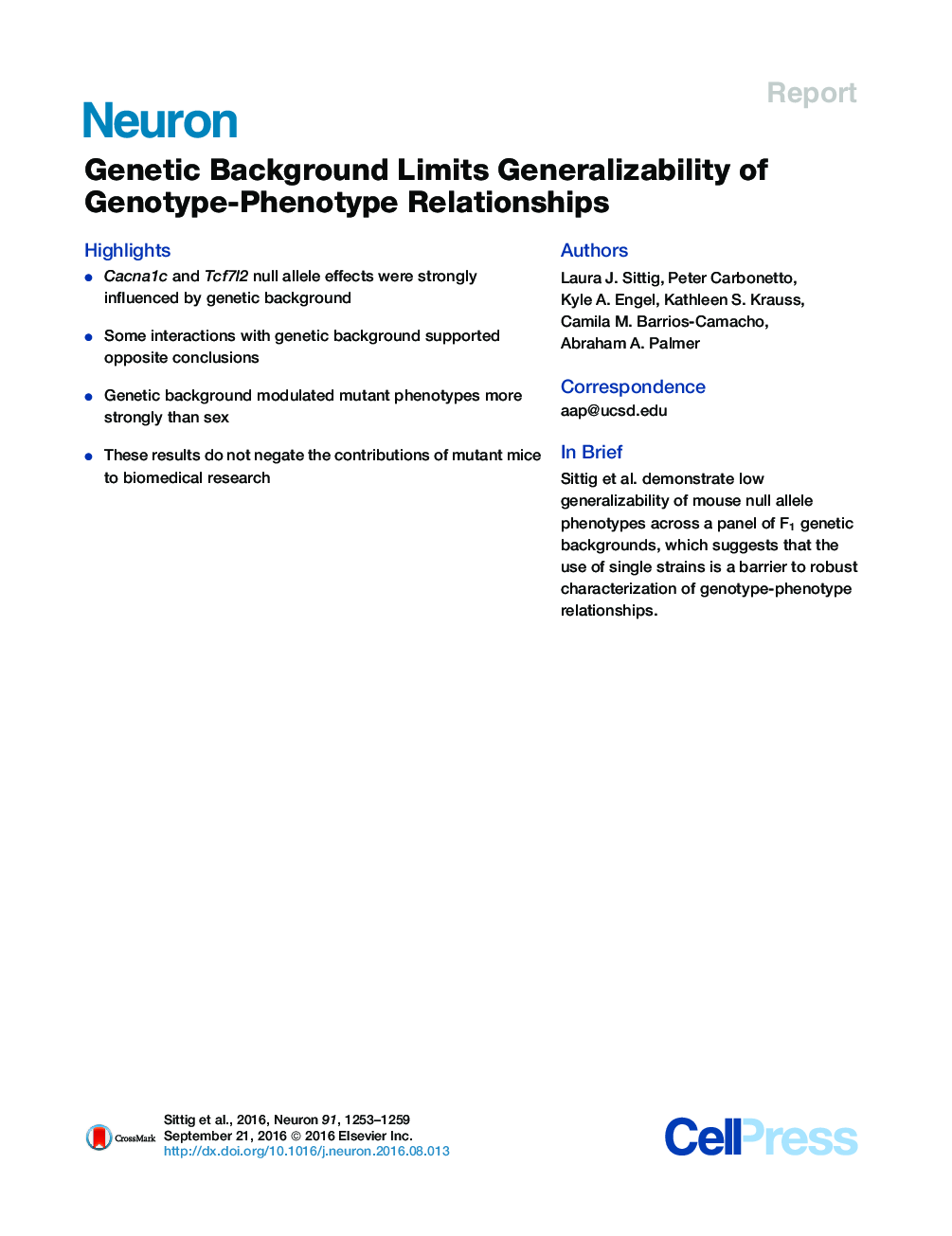| Article ID | Journal | Published Year | Pages | File Type |
|---|---|---|---|---|
| 4320633 | Neuron | 2016 | 7 Pages |
•Cacna1c and Tcf7l2 null allele effects were strongly influenced by genetic background•Some interactions with genetic background supported opposite conclusions•Genetic background modulated mutant phenotypes more strongly than sex•These results do not negate the contributions of mutant mice to biomedical research
SummaryGenome-wide association studies (GWASs) have identified numerous loci that influence risk for psychiatric diseases. Genetically engineered mice are often used to characterize genes implicated by GWASs. These studies are based on the assumption that observed genotype-phenotype relationships will generalize to humans, implying that the results would at least generalize to other inbred mouse strains. Given current concerns about reproducibility, we sought to directly test this assumption. We produced F1 crosses between male C57BL/6J mice heterozygous for null alleles of Cacna1c and Tcf7l2 and wild-type females from 30 inbred laboratory strains. We found extremely strong interactions with genetic background that sometimes supported diametrically opposing conclusions. These results do not negate the invaluable contributions of mouse genetics to biomedical science, but they do show that genotype-phenotype relationships cannot be reliably inferred by studying a single genetic background, and thus constitute a major challenge to the status quo.Video Abstract To view the video inline, enable JavaScript on your browser. However, you can download and view the video by clicking on the icon belowHelp with MP4 filesOptionsDownload video (43868 K)
